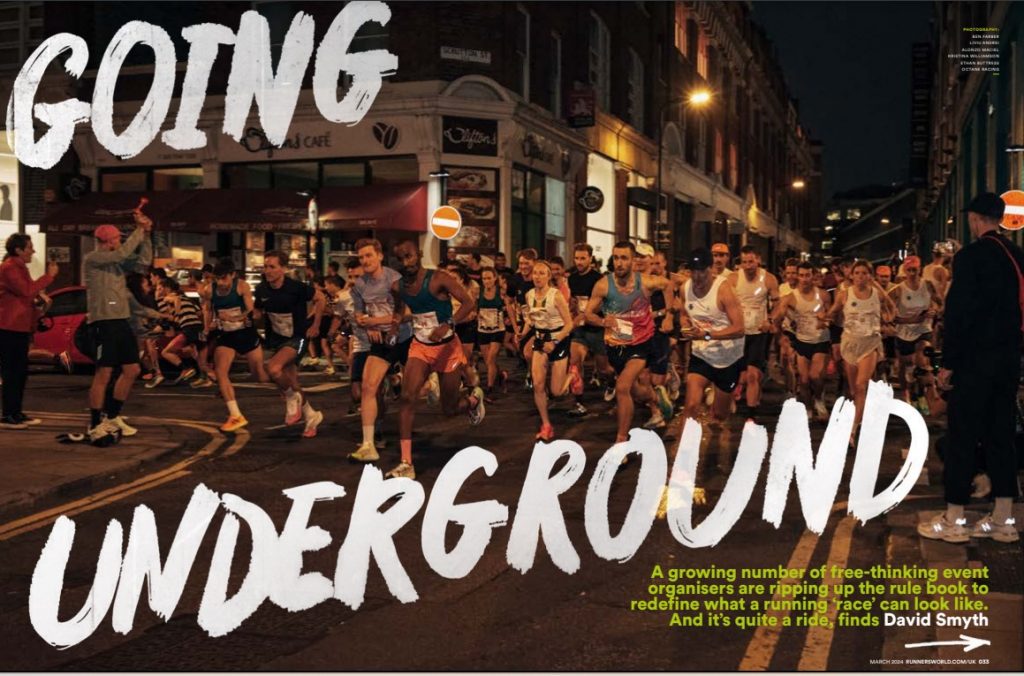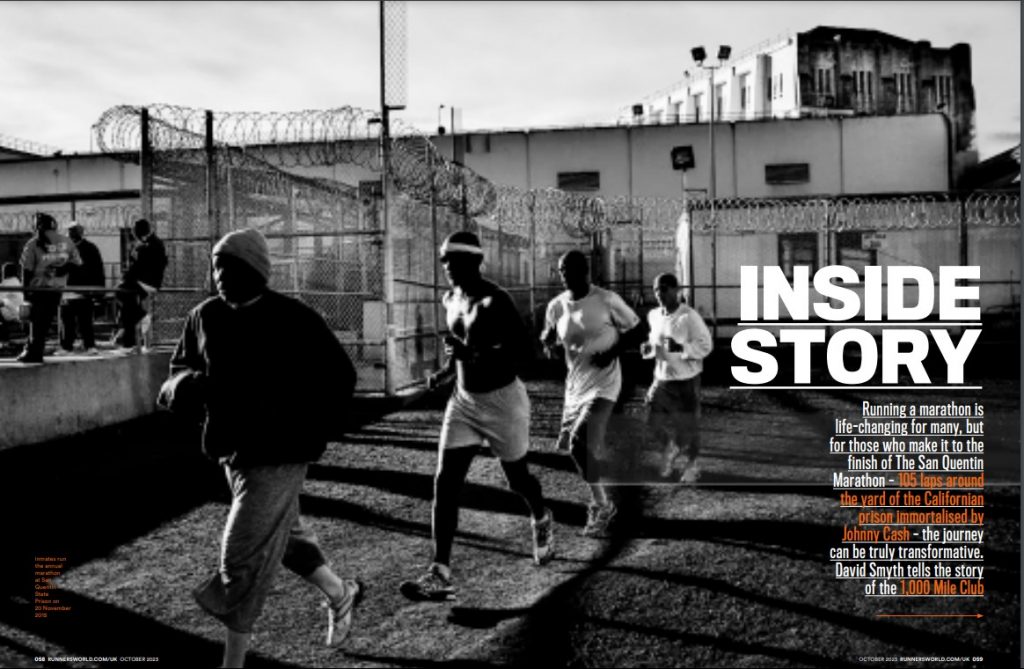As R Kelly sang in Bump ‘n’ Grind, the R&B superstar’s famous song about cross country running, “My mind is tellin’ me no, but my body, my body’s tellin’ me YES!” We can receive conflicting messages when racing, and it’s hard to know what to believe. Most confusingly, how can we tell that we’re trying as hard as we can when we run?
If you cross the finish line and are able to chat straight away, or indeed feel comfortable enough to natter during a race, you could probably give a little more. The problem is that we don’t usually recognise that until late on. If you can summon a blazing sprint finish at the close (and most of us can – that’s the best bit, isn’t it?), who’s to say that you couldn’t have used that extra energy more effectively in the rest of the race?
“The question, ‘How can a runner tell if he has given his best effort over the full distance of a race?’ is fundamentally unknowable,” says coach and author Matt Fitzgerald, who wrote the book How Bad Do You Want It? “No matter how hard an athlete feels he has tried, he always finishes a race – or at least reaches the point where he begins his finishing kick – with a reserve of physical capacity. This is because runners pace their races based on subjective perceptions of their physical limits, and humans appear to be wired to always underestimate these limits.”
You can’t win a top level race without trying your hardest though, surely, so how do the big boys do it? I ask triathlon gold medallist Alistair Brownlee who, as a less than ideal interview mix of single-minded professional athlete and Yorkshireman, doesn’t have much to offer in the way of deep psychological insights.
“It’s hard for me to answer because it comes quite naturally and I’ve done it from a very young age,” he says of his ability to push himself towards first place. He isn’t a believer in visualisation or other ways to train your mind as well as your body for success. “I’ve never let myself focus on crossing the line. I have to remain very much in the moment. I am aware somewhere that I’m really really pushing hard, but I’m staying in the moment, trying to hold on til the next corner, breaking the race down and staying in the present. My opinion is, train as hard as you can physically, get yourself on the start line and embrace the challenge of the race. Just get on with it.”
Simple, huh? “You can almost always try harder than you think you can,” he continues. “So basically you do something as hard as you can, then try and do it about five per cent harder.”
It makes sense that a good way to understand your effort level is to have done something before. When you do it better the second time, you have measurable proof that you’re trying harder. Plus, as we know, having a goal to beat is a great motivator.
Fellrunning world champion Ricky Lightfoot understands the determination that results from doing less well the first time you try something. When we speak he’s just back from the Grand Trail des Templiers in France, a 76km race in which he finished a mere 24th. However, his previous visit was worse. “Two years ago I had an injury at this same race which stopped me finishing it, so I was more determined than ever to finish this time,” he tells me. “I’ve been carrying an injury for about two years. It started hurting after about 30k in this race. I found myself almost wanting to give in and stop. It’s points like that when you feel a bit of self pity. I found myself wishing I had my phone so I could call my partner. But I knew it wasn’t going to get any worse. I just kept on telling myself: get a little bit further, get to the next checkpoint. I told myself I wanted to get to the finish, and I was more than happy with that.”
You’ll have noticed both Brownlee and Lightfoot thinking about their races only in small increments. If you tried to comprehend the magnitude of, say, the Marathon des Sables and its endless stages all at once, you’d run screaming in the opposite direction. But putting one foot in front of the other, then doing it again, and again, ought always to be something you can manage. In practice you can persuade your brain to think positively about repeating these small achievements, according to Andy Lane, Professor of Sport and Learning at the University of Wolverhampton. It’s interval training that will teach you how to push harder for longer.
“If you’re doing 20 reps, you don’t think, ‘I can’t do 17 more of these.’ You don’t have to think about that. You only have to think about the next one,” he tells me. “So you think, ‘Can I do one more? Yes.’ That brings the mindset: ‘Can I go quicker? Yes I can.’ That’s the foundation of mental strength for any endurance event: ‘Can I do this again? Yes. Can I push myself hard? Yes. Is it tiring? Yes. But am I stopping? No!’”
A problem that we face is that we almost always feel that we are trying our hardest, even if the reality is that we could try harder. Matt Fitzgerald cites a study in which cyclists completed a time trial, then did it again racing against an avatar on a computer screen that was programmed to do it two per cent faster than each cyclist had done it previously. The cyclists did better the second time, but on both occasions reported that they’d been trying as hard as they could.
So what you’re trying to do is increase your maximum tolerance for perceived effort. “When you complete a hard workout or race and realise that it didn’t kill you, you feel comfortable pushing a little harder in the next one,” says Fitzgerald.
But how do we measure that effort during a race? An attempt to run at a certain pace per mile can come unstuck when there are hills or a headwind. Using a heart rate monitor can teach you the top level at which you can work, and help you to know the line to keep just underneath. However, they can lag, continuing to climb after you’ve already reached the top of a hill, for example.
Some devices, such as those made by Stryd and RPM2, can now offer a power reading in watts, of the kind used by cyclists. It could be a more accurate way to keep track of physical effort regardless of hills, wind or technical trails.
But no one has yet come up with a gadget for measuring mental toughness. For that, you simply have to suffer. “You’ve got to be broken a little before you can improve your mental strength,” says Ricky Lightfoot. “Without seeing how far you can push it, you’ll never know how much you’re capable of.”
5 TOUGHEST RACES FROM AROUND THE WORLD
Self Transcendence 3100 Mile
Your best chance of achieving running nirvana or going completely bonkers. Run 3,100 miles (you read that right) over 52 summer days around a single block in Queens, New York: 164th Place to Abigail Adams (84th) Avenue to 168th Street to Grand Central Parkway.
Marathon Des Sables
If, on your regular runs, you find yourself thinking: “I wish I had more sand in my socks,” why not go for the big one? Over six days, masochistic runners cross 156 miles of the Sahara Desert.
Otillo
An island-to-island “swimrun” near Stockholm, competitors must cross 24 islands, running a total of 40 miles across them and swimming just over six miles between them. Pippa Middleton did it in 2015, so how hard can it be?
Dragon’s Back
A daunting traverse of the whole of Wales from north to south: 200 miles in five days, including about 8.5 miles of ascent. The organisers insist it’s “the toughest 5-day mountain running race in the world.”
Badwater Ultramarathon
Mid-July in California’s Death Valley is a fine place for lizards and cacti, but less so for runners. Nevertheless, people keep attempting this 135 mile course in temperatures of up to 54C.
5 ATTRIBUTES/PERSONALITY TRAITS THAT MENTALLY TOUGH ATHLETES SHARE
They’re hyper competitive
“I’m always trying to win, and giving up is like losing. Being mentally strong and trying to carry on to the finish is probably my way of winning,” says Ricky Lightfoot.
They stay in the moment
“I don’t want my mind to wander off from the moment,” says Alistair Brownlee. “If you’re in a race thinking, ‘I can’t do this. I have to make myself do this,’ it would already be too late.”
They stick to a schedule
Says Andy Lane: “Pro athletes’ ability to stick to training programmes is collossal, plus their ability to run on the edge of where it hurts and be okay with that. Most people could get a lot better at learning to cope with more.”
They exhibit inhibitory control
That’s the ability to stay focused on the thing that you want most, even when confronted with two incompatible things, such as A: wanting to finish quickly, and B: not wanting to suffer.
They know it’s not just about effort
Technique is important too. “There’s a balance between going as hard as you can and maintaining your technique,” says Brownlee. “You can try too hard and lose out in another way.”
5 WAYS TO IMPROVE MENTAL TOUGHNESS
Reframe your suffering
As author and runner Haruki Murakami reminded us: “Pain is inevitable. Suffering is optional.” Andy Lane elaborates: “You can train your brain to interpret sensations of fatigue as sensations of goal achievement.”
Repeat yourself
You know for sure that you’re trying harder if you do the same thing again, and do it better.
Set goals
You’re more likely to try harder if you perceive your extra effort as worthwhile. So go for that PB, or that good position.
Do short intervals
The shorter the better, says Lane. “Make each rep short enough for you to go hard and not overthink pacing. When it’s short, you can do another one and develop your ability to say, ‘Yes, I can keep going.’”
Pace yourself smart
“If you did a Parkrun in 20 minutes, the first half in nine and the second half in 11, a lot of people would go by you in the second half and you’d feel awful,” says Lane. “The other way round, you’d be accelerating and finish feeling fabulous.”













